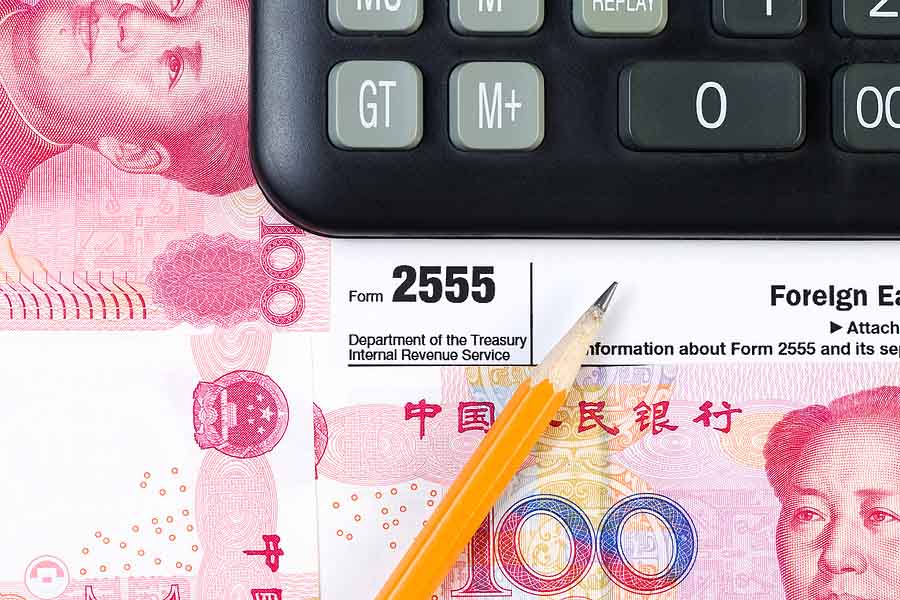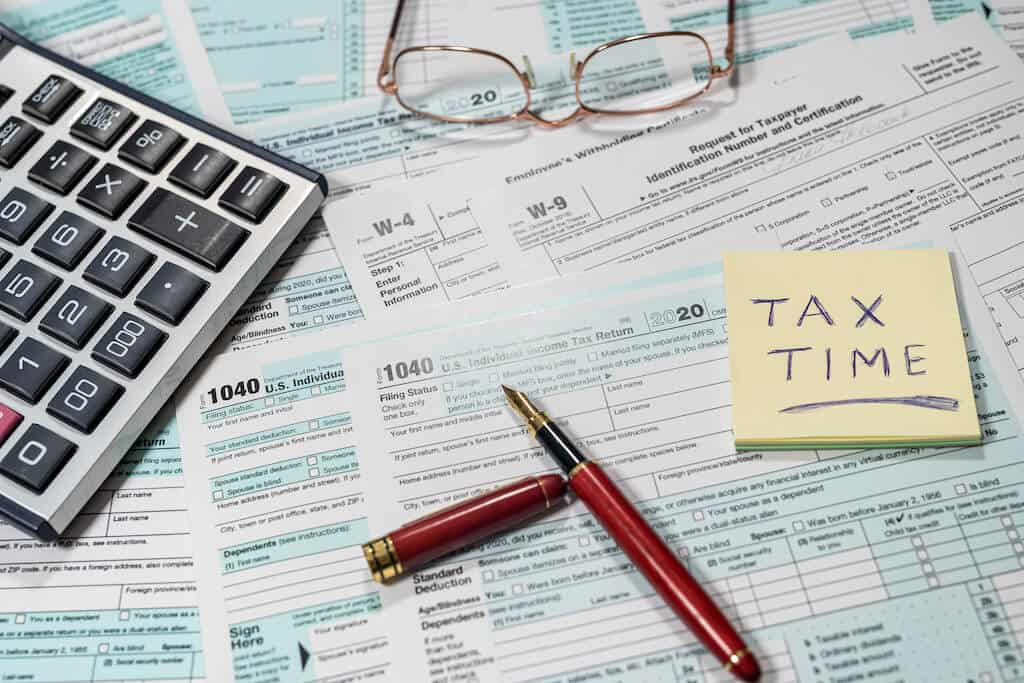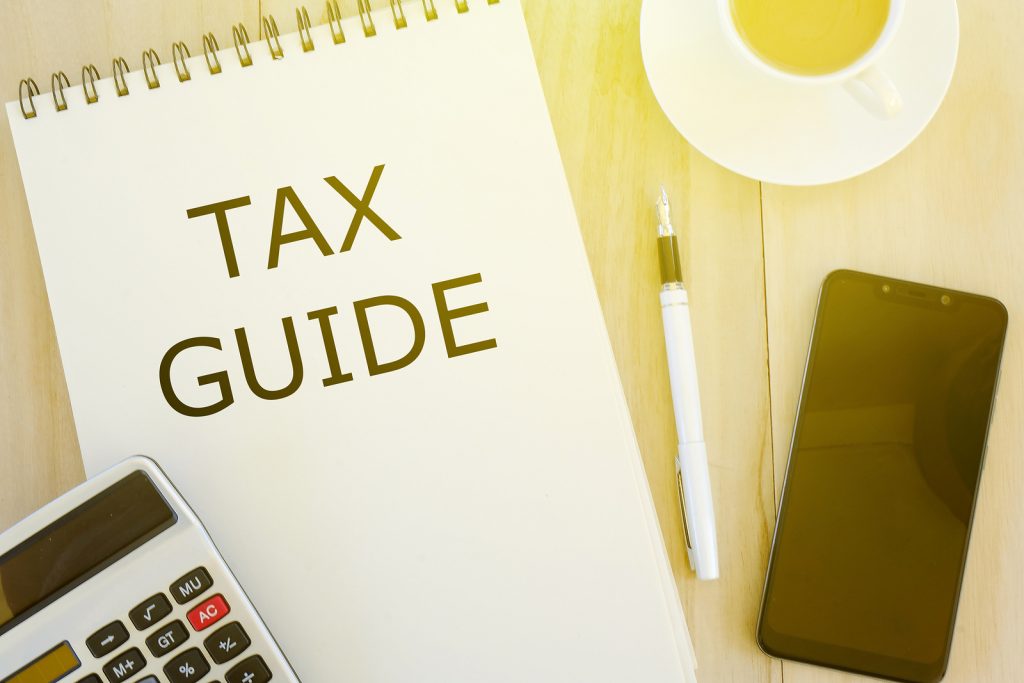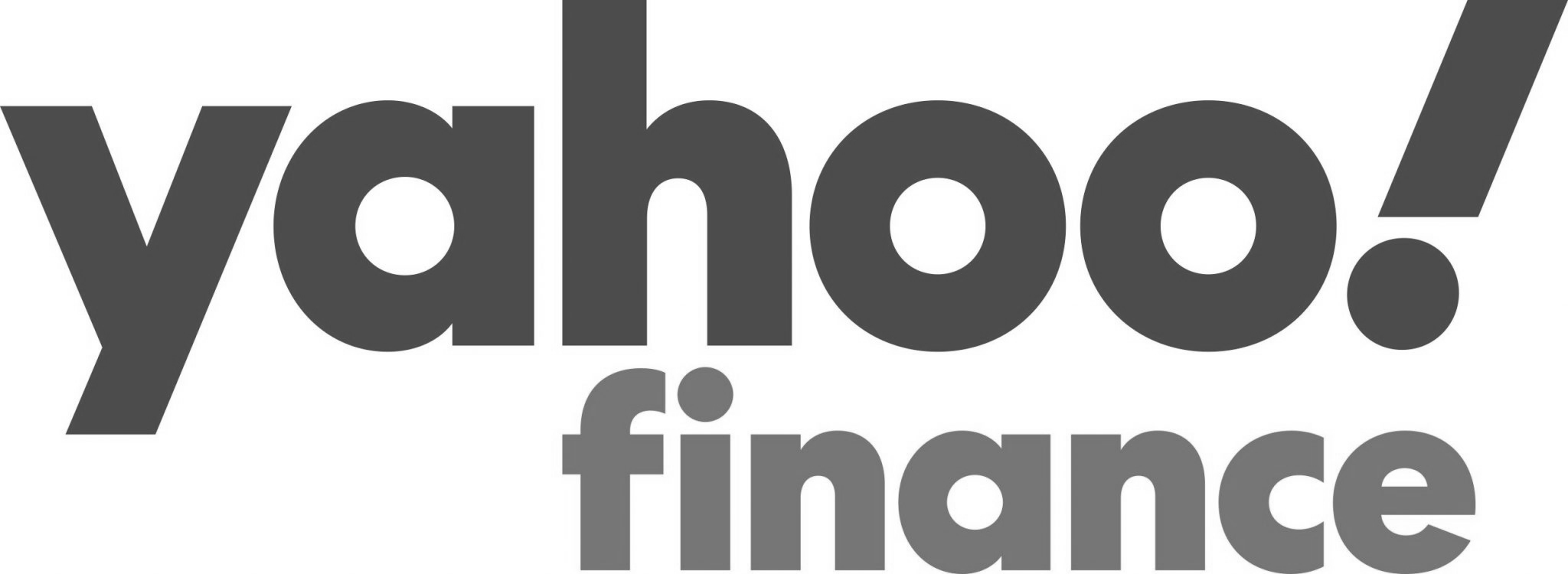Using Form 2555 to Exclude Foreign Income
April 4, 2023 | Tax Forms | 5 minute read
Expat Tax Blog. Tax Tips for US Americans abroad.
 All blogs are verified by IRS Enrolled Agents and CPAs
All blogs are verified by IRS Enrolled Agents and CPAs

We are back with another way to help you hopefully reduce your tax bill, save you money & allow you more time to adventure your new corner of the world. Today, we are talking about the Foreign Earned Income Exclusion. Also known as IRS form 2555 in the tax world. Here in this article and others across our website, we use “FEIE,” which is just a simple abbreviation.
What is Form 2555?
For seasoned expats ripe with tax information for fellow US expats abroad, the Foreign Earn Income Exclusion is likely one of the first tax-related topics in your circle.
However, for our newer US expats, Form 2555 is a tax benefit that allows US expats to exclude up to $112,000 for the 2022 tax year (filed in 2023) on their foreign-earned income.
Use IRS Form 2555 to help prevent that pesky double-taxation! We advise you that the amount of money you can exclude generally rises each year due to inflation. So make sure will to check annually!
Expat parents learn that they cannot claim the Refundable Portion of the Child Tax Credit if they claim the Foreign Earned Income Exclusion. That doesn’t mean they need to pay twice. If they’re in a country where they pay a higher local tax rate than the US rate, we advise you to claim the Foreign Tax Credit instead.
It can be confusing to know whether to use the FEIE or FTC. That’s why MyExpatTaxes looks at all of your information and helps you choose the filing method that saves you the most money.
Who Can File Form 2555?
Now that we’ve established what the FEIE is let’s get down to the important information: who can claim it? There are three ways to find out if you’re eligible to use it:
1. Tax Home and a Foreign Address
While this is not necessarily one of the two main tests as outlined below, it is sometimes a missed requirement. You need to certify to the IRS that you have a tax home abroad or at a minimum a foreign address to use on Form 2555.
Your tax home is considered the place of your primary location of employment; including if you’re away from the US for more than a year. In this case, your tax home will be regarded as the foreign country you’ve relocated to. Where your family home is, is irrelevant for this test.
Worth noting: During your period of Bona Fide Residence or Physical Presence abroad, your tax home must be located outside of the US. You must have a tax home abroad and meet either the Bona Fide Residence OR Physical Presence Test.
2. Physical Presence Test
This is applicable for US expats temporarily living and working abroad in a foreign country. While the Physical Presence Test does not require you to be overseas for a full calendar year, you must spend 330 of 365 days in the consecutive 12 month period abroad. The hot tip here, the 12-month period does not need to be January 1st to December 31st, you can determine your own 12-month period for the tax year based on your travels.
3. Bona Fide Residence Test
You must establish your residency in your new country abroad to claim the Bona Fide Residency. This generally begins the day you move abroad. Then it ends the day you move back to the US. Your bona fide residency needs to be over a period of at least one single tax year. In other words from January 1st to December 31st.
What If I’m Married?
Even married folks can use Form 2555! If your partner is a US citizen or Green Card Holder and is working and living abroad, both you and your spouse may individually file the Foreign Earned Income Exclusion. If your partner is neither a US Citizen nor Green Card Holder, simply file separately and leave their income off of your tax return.
When Should the FEIE be Filed?
You will want to go ahead and submit this form with your Form 1040 simultaneously. For expats abroad, that means by June 15th!
How to File Form 2555
The IRS Form 2555 is a three-page form that requires information on the following:
- Name and (foreign) address
- Employer’s name and address
- Type of employment (traditional or self-employed)
- Reason for living abroad
- If you’ve claimed (and revoked) the FEIE previously
| Expat Tax Tip: if you have revoked the FEIE in the past, you will not be able to claim it for five years |
If you’re claiming the Physical Presence Test or the Bona Fide Residence Test, you will need to fill in Part II or Part III. Either way, be prepared to include information on how much time you spend in the US.
An easy way to keep track of your time in the US is to buy a small desk calendar and highlight each day (or week) you were in the US! The MyExpatTaxes software will ask for your US Travel and automatically compute what test best fits your situation.
Parts IV will be an area where you can enter your income or recouped expenses and will need to be filled out by all US expats.
Part V is where the IRS asks if you would like to claim the Housing Exclusion or Housing Deduction for our self-employed expats. If you would like to claim either on your taxes, fill out Part V and move to Part VI.
The final portions of VII and VIII are the math portions where you will enter all final figures which will need to correspond to your Form 1040, so be prepared to have that form close by!
What if I’m Self-Employed?
US expats living and self-employed abroad, are subject to the additional US self-employment tax. As stated, this is in addition to your regular US taxes; thus, the FEIE cannot be used to reduce your self-employment tax, BUT it can be used to eliminate or reduce your regular US taxes.
What if My Employer is US-based, but I Live and Work Abroad?
Great question! You can claim the exclusion of foreign earned income because your income source is not the determining factor for your eligibility!
Are There Penalties for Not Claiming Form 2555?
Nope! This form is simply for those who would like to take advantage of the foreign earned income exclusion while living and working abroad for a year or more!
Wait, I Need an Example!
It’s totally okay if you’re feeling overwhelmed by all this information. Let’s walk you through an example situation.
Say you’re living and working in Spain. You file as single on your 2022 US federal tax return.
Your foreign income in Spain for the filing year was around $114,500
You paid around $10,000 on your Spanish taxes
We are assuming you will owe around $30,000 on your US taxes
You can exclude up to $112,000 of your foreign income on your US taxes. Bringing your wages subject to tax in the US to $2,500. The standard deduction for a “single” taxpayer is $12,950 (for the 2022 Tax Year). Meaning you will not owe any US federal taxes. Just bare in mind, the portion of foreign taxes related to the amount of foreign wages will also be excluded. However, if you have any remaining credit, you can also claim the Foreign Tax Credit. Any additional credit will roll over to the following tax year.
Once you’re done filing, be sure to check out these 5 things you can do now, to make filing next year even easier.
Need More Help?
We get it! This is a lot of information to sift through, with tons of little things to keep track of. It can be extremely overwhelming, especially the first few times! Our tax professionals can help guide you through and finish your US Expat Taxes for you. MyExpatTaxes makes the tax season float by in the breeze and gets you back to what you are excited about: being an expat.












